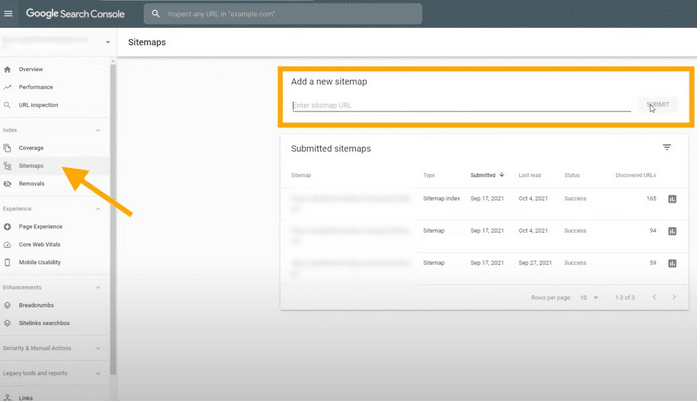Dynamic Search Ads (DSA) are one of the most effective campaigns in Google Ads — in fact, it’s the only type of campaign that can beat smart shopping campaigns.
Specifically, running a proper DSA campaign helps you find customers searching for your product or service as it fills in the gaps in your keyword-targeted campaigns.
If you’re thinking of running a DSA campaign, or are already running one and want to maximize its performance with some pro tips, this article is for you.
Content:
Difference between DSA campaigns and General Search campaigns
Why run DSA campaigns?
Before you run a DSA campaign
Transparency, always
The “noun-focused” rule
Don’t miss this step when running a DSA campaign
Pages to exclude
The most important keyword to exclude
Difference between DSA campaigns and General Search campaigns
When a Google user enters a search relevant to your website but doesn’t contain any keyword you’ve targeted, your ad typically wouldn’t be shown to that user.
For example, even if you run a bakery in New York, Google still wouldn’t normally show your ad to someone searching for ‘New York bakeries’ if you’re not explicitly targeting those keywords.
That’s how competitive Google Ads are.
Dynamic Search Ads. however, can help you solve this.
With DSA campaigns, your site will appear in the search results when someone searches for a term that’s closely related to a frequently used phrase or title found on your website.
DSA is like instantaneous SEO, it’s pretty much SEO you pay Google for.

Why run DSA campaigns?
One of the main benefits of running a DSA campaign is that you don’t have to create new ads for every campaign.
Your headline, final URL, and display URL will be dynamically generated, all you need to create is a description.
This will save you a lot of time, especially if you’re running multiple campaigns at once.
Since DSA campaigns are automatically created based on the content of your website, they’re designed to be highly relevant to your customers. So you can expect more clicks and conversions if you create the campaign correctly.
Plus, when you run DSA campaigns, you can track which keywords are driving the most conversions. This will help you optimize your other campaigns for even more conversions!
Before you run a DSA campaign
There are a few ways to make sure your DSA campaigns are reaching the most relevant audience.
But before you follow the best practices, start with a good foundation.
First, make sure the content on your website is of high quality and is tailored to the needs of your customers.
You can improve your site for both Google Ads and your marketing efforts by following our tips for creating effective landing pages.
Next, make sure Google wouldn’t have a hard time reading your landing pages, code-wise.
Make your site accessible for Google Ads to be able to dynamically create the right ads for your customers.
When you have everything set on your site’s front-end and back-end development, you can start running DSA campaigns in Google Ads with these pro tips:

Transparency, always
Transparency is a big deal in advertising.
That’s why there are laws against false advertising and why Google requires that you be transparent with your ads.
Your ad must be clear about what it is you’re selling.
Exaggerations and salesy content wouldn’t do you any good.
You want to make sure people understand what you’re selling — and that means using the words people are searching for.
That helps Google show the right ad to the right person at the right time.
Google also rewards transparency and honesty. If you are who you say you are and people like you, Google gives you better placement on the search results page.
The “noun-focused” rule
When Google indexes your site, it looks at your page content and uses its algorithms to determine what your site is about.
It looks for keywords, but also for the types of words that describe your company and products better than any others: nouns!
This means that if you’re selling laptops, don’t put in ‘the fastest portable technology for productivity.’
With that, no one would understand what it is you’re selling, not even Google!
Instead, just put in ‘laptops’ and their specifications.
Remember to keep it simple. Think of Google as a five-year-old kid; communicate using the right words, use nouns.
Don’t miss this step when running a DSA campaign
Be on top of your DSA campaigns by making sure you update Google every time you optimize something on your landing pages.
This is something most people miss.
Why?
Because Google doesn’t mention this and you have to do this on a separate tool.
Do not make that mistake, follow these steps:
1. Create an account or log in to Google Search Console.
2. Click on map Sitemaps on the left toolbar under ‘Index.

3. Add and submit your sitemaps every time you modify something on your landing pages.
This will prompt Google to scan your pages and update your DSA campaigns accordingly so your ads stay relevant.
Pages to exclude
To get the most out of DSA campaigns, you need to be smart about how you use them.
When setting up your DSA campaign, make sure you’re only targeting the pages and content that drive transactions or direct users to other marketing initiatives.
Don’t forget about excluding non-transactional URLs, like:
- Product pages with out-of-stock or discontinued items
- Blogs
- FAQs page
Other types of content, including personal finance and education information
You don’t want your ads pointing users towards dead ends or bad user experiences.
That could backfire by generating negative reviews and reducing customer trust in your brand.
You can easily do this by creating exclusions on the Negative Dynamic Ad Targets tab on your Google Ads account.
The most important keyword to exclude
The last thing you want to happen is for your DSA campaign to show when someone is searching for your brand name.
If that happens, you’re wasting money.
When people search for your brand name, they probably already know about you and they’re ready to buy. They’d just search directly for your site, no ads needed.
During setup, make sure you exclude your brand name from the keywords by adding it as a negative keyword.
Adding negative keywords to DSA campaigns is similar to adding them to any other campaign. When you add them, you exclude them from showing in search results — that means they won’t show up in ads or search results where they could cause a mismatch between your ad and customer intent.
Hopefully, the tips above will help you in running more successful DSA campaigns in the future.
One of the best things about DSA campaigns is that they’re quite easy to set up, the trick is getting the leads to convert at a high rate. That’s where your skills and consistency as a marketer come into play.
Check out our YouTube channel where we share more tips like these every day to help advertisers improve at Google Ads.
Author
Joan is the YouTube Growth Manager at Solutions 8. When she’s off the clock, you’ll find her chilling with her 10 fur babies, pushing her limits in CrossFit sessions, or basking in the serenity of the beach.
 Joan Porio
Joan Porio










